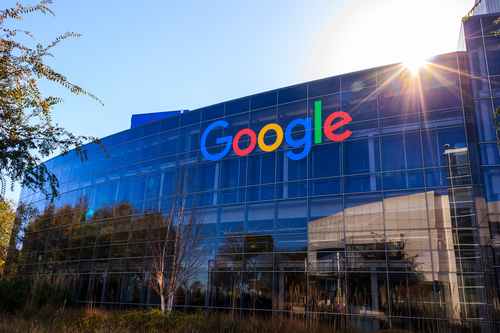INTERNET
Google PAGES Update
Lower Rankings for Poorly Designed Websites
By Joe Dysart

Google is promising to double down on its policy to penalize poorly designed websites with lower rankings in search-engine returns with its next update which is rolling out this month. Websites that exhibit poor performance on mobile devices, use annoying pop-up ads, are tough to interact with or are plagued by similar shortcomings are going to be policed by the Google search engine.
“These signals measure how users perceive the experience of interacting with a web page and contribute to our ongoing work to ensure that people get the most helpful and enjoyable experiences from the web,” said Jeffrey Jose, product manager of Search for Google.
Added Sowmya Subramanian, director of engineering for Search Ecosystem: “Great page experiences enable people to get more done and engage more deeply.”
Dubbed “Google Page Experience,” the ranking system is expected to hit websites competing for the same keywords and keyphrases the hardest. For example, two competitive sites using the same keywords and keyphrases that feature comparably excellent content will find that a poorly designed website will get a lower ranking on Google, while an excellently designed website will come out on top.
Of course, Google’s announcement that a crackdown is coming sent reverberations across the web, given that it dominates searching worldwide. According to Statista, 87% of all web searches are made using the Google search engine (https://tinyurl.com/statista-marketshare), so when Google speaks, people listen.
While Google has been penalizing poorly designed websites with lower search-engine rankings for a number of years, this latest initiative will focus solely on how websites are performing on mobile devices. That makes sense, given that nearly three-quarters of all internet users will solely use smartphones to access the web by 2025, according to a report by the World Advertising Research Center (https://tinyurl.com/warc-content-paywall).
In the crackdown this time, Google is also trial-ballooning the idea of using a graphic icon in the web address bar to indicate if a website is poorly designed and poorly performing. The graphic-icon warning approach served the search giant well a few years back when it used an exclamation symbol in the website address bar to warn web surfers that they were clicking to a website that did not use HTTPS. The format is designed to ensure that websites and web browsers use encryption to exchange sensitive information such as passwords, social-security numbers, credit-card numbers and the like.
These days, virtually every website that wants to be taken seriously uses HTTPS encryption, which is indicated in the web address bar with the display of a tiny lock. So far, the advent of an icon indicating the poor page experience icon is still talk, but it’s definitely worth monitoring closely.
“This latest update just reinforces the importance of having a technically sound website,” said Tyler Cameron, senior SEO manager for Seer, a digital marketing firm. “We often focus so heavily on content, but remember that the foundation has to be there as well.”
Indeed, even slight shortcomings in page speed alone can generate a disastrous falloff in website visits, according to Sergio Arboledas, SEO manager for MintTwist, a digital marketing firm. For example, pages that take only 3 seconds to load still trigger a significant number of web surfers to click away, Arboledas said, and pages that take 6 seconds to load increase the probability that a web surfer will click somewhere else by 106%.
Fortunately, Google is offering detailed guidance on the metrics it will be using to monitor website design and performance. The following is a breakdown on those signals, as well as key tools you can use to get an extremely granular look at how your website is performing and how its design can be improved.
Poor Performance on Mobile Devices: Given that excellent performance on mobile devices has been the Holy Grail for Google for a number of years, it’s no wonder that the search engine is doubling down on its requirements for that performance indicator. In a phrase, sites that are not designed for visitors using smartphones and similar small-screened devices will be penalized in a Google Page Experience evaluation.
Annoying Pop-Ups and Other Interstitials: Those who grit their teeth when websites overload their screens with pop-ups, slide-into-view offers and similar annoyances should welcome Google’s renewed determination to impose a penalty on those behaviors.
Yes, pop-ups and similar tactics do sometimes work, but they may no longer be worth it if Google places a website lower in its search engine returns as a result.
Malicious or Similar Software Onboard: While malware and similar software is often embedded on a website without the knowledge of the website owner, Google still plans to penalize website owners when it finds such software there. The message is that you should make sure you continually monitor possible sabotage of your website.
No HTTPS: Most site owners got the memo a few years back that Google would penalize websites that do not use the HTTPS standard. It’s a communications format used between a website and a web browser which ensures that all data transmitted is encrypted. Such encryption is critical for safer exchanges on websites that accept credit cards and similar sensitive information, so if you’re still using the older HTTP standard, now is definitely the time to switch.

monitor website design and performance.
Slow Loading: Faster webpage download time was probably a pursuit only moments after the first website was published to the web. Google’s equation for speed is simple: The faster your website downloads in a browser, the potential higher ranking it will win in Google search-engine returns.
Poor Interactivity: No one appreciates poor interactivity or when a “buy now” button or a “subscribe now” button or similar item on a website responds slowly or not at all. If your site is guilty of this time-wasting, Google will take a dim view of what’s going on.
Poor Visual Stability: Once in awhile, you’ll click to a site that seems schizophrenic in its presentation, with images, text and other content jumping about randomly until the site renders fully. That is a product of poor design and will also be penalized by Google.
Fortunately, Google offers a number of tools you can use to see how your website adheres to Google’s Page Experience rating and correct any shortcomings. For example, Google’s free Google Search Console
(https://search.google.com/search-console/about) will provide an overall analysis of all the signals Google is watching for when making a Page Experience rating.
For overall maintenance, Chrome Dev Tools (https://developers.google.com/web/tools/chrome-devtools) offer a comprehensive way to drill down on facets of a website that are scoring poorly on Google’s Page Experience rating and ensure that you make the corrections needed to eliminate those problems.
Meanwhile, to improve your website speed only, you can use Google’s free Page-Speed Insights (https://developers.google.com/speed/pagespeed/insights), which offers a page-by-page analysis of website speed, where the trouble is located, and how you can rid yourself of speed bumps.
 And for maintenance work on poor interactivity or poor visual stability, you can use Web Vitals Chrome Extension (https://tinyurl.com/chrome-webstore-web-vitals) to perform a page-by-page analysis of what’s going on and secure specific suggestions for correcting the problem.
And for maintenance work on poor interactivity or poor visual stability, you can use Web Vitals Chrome Extension (https://tinyurl.com/chrome-webstore-web-vitals) to perform a page-by-page analysis of what’s going on and secure specific suggestions for correcting the problem.
Joe Dysart is an internet speaker and business consultant based in Manhattan.
646-233-4089
joe@dysartnewsfeatures.com








